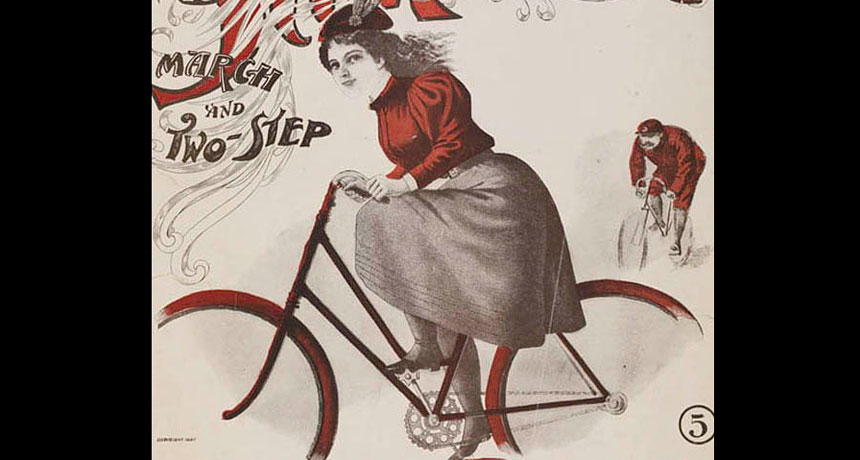Some everyday objects change everything
A new museum exhibit explores commonplace objects in a new way

Most people don’t think a lot about the time before the bicycle. But this new vehicle helped more women get out and about than ever before.
National Museum of American History
Share this:
- Share via email (Opens in new window) Email
- Click to share on Facebook (Opens in new window) Facebook
- Click to share on X (Opens in new window) X
- Click to share on Pinterest (Opens in new window) Pinterest
- Click to share on Reddit (Opens in new window) Reddit
- Share to Google Classroom (Opens in new window) Google Classroom
- Click to print (Opens in new window) Print
Most people don’t give much thought to their refrigerator — unless they are wondering how much food is in it. But the fridge is an invention that changed our shopping habits, improved human health and transformed the modern world. Now, a new museum exhibit at the Smithsonian’s National Museum of American History focuses new attention on this appliance, the telephone, bicycle and other everyday objects. Called “Object Project,” this exhibit inspires visitors to think deeply about the technologies around us and how they impact our lives.
Exhibits often ask museum-goers to follow a visual timeline through history. These may introduce you to early refrigerators, for instance, before directing you to move through time to the current generations of them. Each fridge might have a plaque next to it, describing what makes it new and different from earlier models.
But not this exhibit. Here, your visit begins with a statement “Refrigeration = Happiness.” The challenging statement stands in front of an area with video, audio — and, of course, a model refrigerator. Visitors can watch old videos to see how refrigerators changed the way people ate and how it freed up a cook’s time. Museum workers stand at stations, teaching visitors how even the smallest objects — such as ice cubes — have altered the way we live.
Learning here is active. There’s very little text to read. Instead, people touch objects. They press buttons to hear sounds. They swipe a touch screen to watch short videos or bring up conversations. This exhibit “is about asking questions and finding the answer for yourself,” explains Emma Grahn. She’s an educator at the museum who worked on the new exhibit.
The museum’s goal, here, is to make visitors of all ages think about objects differently. In a sense, it invites them to become a historian in the process.
And the exhibit is not just about technology. Innovation is how people improve on existing ideas, such as adding additional gears to make pedaling easier. But innovation is not just about invention. It’s also about society and its culture.
One very special bicycle gets pride of place to show the interplay between technology and this culture over the years. The vehicle is a gorgeous nickel, silver and gold creation. Created in 1896, it is monogrammed in emeralds. But its importance is more than chrome-deep. Visitors look around the bike and explore its features. It has a skirt guard so that women could bicycle in a dress. Its beautiful mounted lamps show that women were going out on their own at night. Their air-filled rubber tires didn’t just provide a smoother ride — they also made cyclists demand better roads. Historic newspaper articles and advertisements in the exhibit let visitors read firsthand how bikes helped break down gender barriers.
Visitors to the exhibit can explore similar culture-changing impacts of everything from the first mass-produced washing machine to the very first Game Boy. “All of these things are common place; they’re not things you usually see on display in a museum,” Grahn explains. “But they had a huge impact on our daily lives. And if you dig into the things you see their importance.”
With museum staff to help visitors get the most out of the items on display, people will definitely leave with a new appreciation for everyday objects. And all without reading a single plaque.
“Object Project” is funded by the Patrick F. Taylor Foundation. The exhibit opened July 1, 2015. Free of charge.
Follow Eureka! Lab on Twitter
Power Words
(for more about Power Words, click here)
innovation (v. to innovate) An adaptation or improvement to an existing idea, process or product that is new, clever or more practical.
technology The application of scientific knowledge for practical purposes, especially in industry — or the devices, processes and systems that result from those efforts.